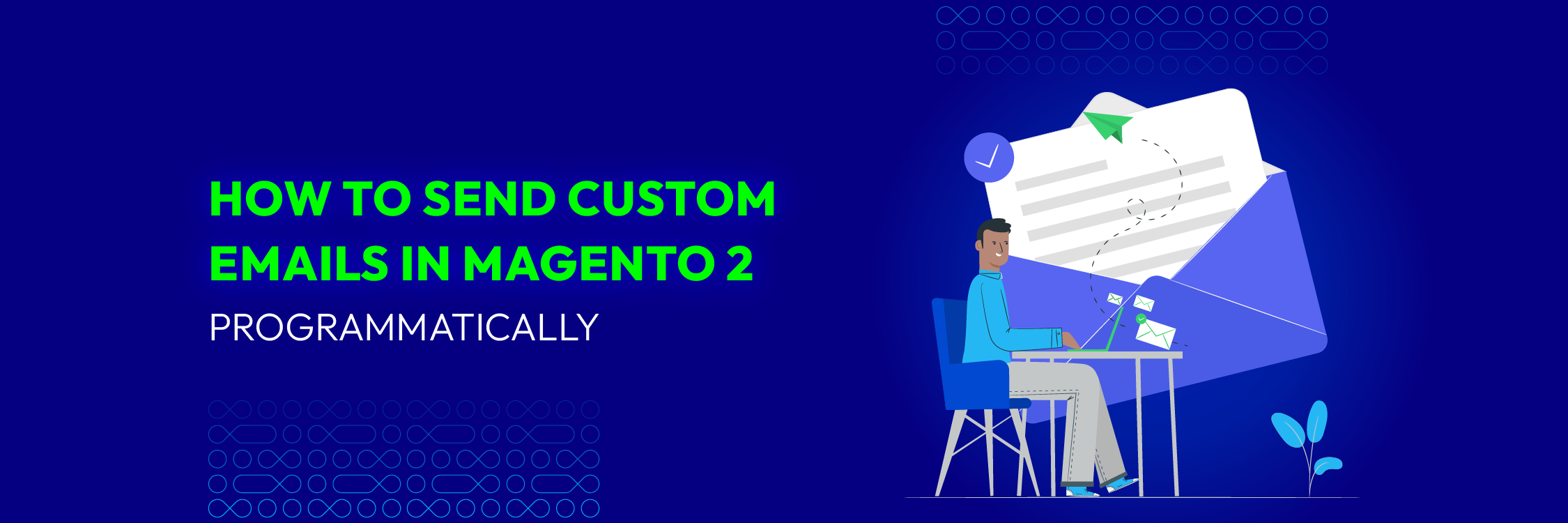How to Send Custom Emails in Magento 2 Programmatically

Since social media are creating storms in the e-commerce world, is email still a good portal to communicate with customers? Numbers say it all. In 2023, over 4.3 billions people are still using emails and the email marketing revenue reached $10.89 billion. We can see that email is still in the game and it brings back significant profits to businesses.
However, the Magento 2 default only supports limited aspects of email, such as:
- Welcome email
- Forgot Password email
- Order Confirmation email
- Invoice email
- Shipment email
- Credit memo email
- Newsletter subscription email
In case you want to send a more personalized email for special occasions, the default version can not meet your requirements. Don’t worry! We will give you the solution right away.
How to Send Custom Emails in Magento 2 Programmatically
Here’s how to send custom emails in Magento 2 programmatically!
<?php
namespace [Vendor]\[Module]\Helper;
use Magento\Framework\App\Helper\Context;
use Magento\Framework\Mail\Template\TransportBuilder;
use Magento\Framework\App\Helper\AbstractHelper;
use Magento\Framework\Translate\Inline\StateInterface;
use Magento\Store\Model\StoreManagerInterface;
class Data extends AbstractHelper
{
protected $transportBuilder;
protected $storeManager;
protected $inlineTranslation;
public function __construct(
Context $context,
TransportBuilder $transportBuilder,
StoreManagerInterface $storeManager,
StateInterface $state
)
{
$this->transportBuilder = $transportBuilder;
$this->storeManager = $storeManager;
$this->inlineTranslation = $state;
parent::__construct($context);
}
public function sendEmail()
{
// this is an example and you can change template id,fromEmail,toEmail,etc as per your need.
$templateId = 'my_custom_email_template'; // template id
$fromEmail = 'owner@domain.com'; // sender Email id
$fromName = 'Admin'; // sender Name
$toEmail = 'customer@email.com'; // receiver email id
try {
// template variables pass here
$templateVars = [
'msg' => 'test',
'msg1' => 'test1'
];
$storeId = $this->storeManager->getStore()->getId();
$from = ['email' => $fromEmail, 'name' => $fromName];
$this->inlineTranslation->suspend();
$storeScope = \Magento\Store\Model\ScopeInterface::SCOPE_STORE;
$templateOptions = [
'area' => \Magento\Framework\App\Area::AREA_FRONTEND,
'store' => $storeId
];
$transport = $this->transportBuilder->setTemplateIdentifier($templateId, $storeScope)
->setTemplateOptions($templateOptions)
->setTemplateVars($templateVars)
->setFrom($from)
->addTo($toEmail)
->getTransport();
$transport->sendMessage();
$this->inlineTranslation->resume();
} catch (\Exception $e) {
$this->_logger->info($e->getMessage());
}
}
}
Note: Please pay attention that the solution given above works best for Magento 2.2.x and 2.3.x versions.
Conclusion
Hope that our blog has given a bit more confidence to those who are unsure whether to implement email marketing. If you have any questions, please feel free to contact us.






![Top 20+ Must-have Shopify Apps for 2025 [Free & Paid] - Mageplaza](https://cdn2.mageplaza.com/media/blog/must-have-shopify-apps/top-must-have-shopify-apps.png)
![[2025 Updates] Top 10+ Upsell Apps for Shopify - Mageplaza](https://cdn2.mageplaza.com/media/blog/best-upsell-shopify-app/cover.png)